How to Propagate Succulents from Leaves
Learn how to propagate succulents in just a few simple steps! If you’d like to grow more succulents inexpensively and get new plants from the few you have now, then succulent propagation is the easiest way.
When you’ve tried your hand at it, you’ll realize that leaf propagation is like nature’s gift to succulent lovers! With this easy propagation method, you can end up with several little plants that replicate the mother plant in just a few months.
You can propagate different types of succulents, but as far as leaf propagation goes, I have had the best results with Echeverias and Ghost Plants; the baby succulents they produce are adorable.
Keep in mind, however, that the propagating process takes a long time but if you stick with it and learn the process, you’ll find it has a great success rate and is worth the wait!
(This post may contain Amazon affiliate links. I may get a small commission if you purchase through these links, at no extra cost to you.)
We’ll go over each step below but to get starterd, all you’ll need on hand is a shallow tray, succulents, cactus soil, spray bottle, and sunlight or grow lights. Let’s delve into the details!
Propagating Succulents that have Stretched Out Due to Lack of Sunlight
Succulents that have grown leggy or stretched out are perfect for propagation, particularly if you hate the way they look. It’s a great way to take your leggy succulent apart and create new succulent plants from it instead of simply putting up with its new aesthetic.
If you’re wondering why your succulents grew leggy, here’s why: succulents grow this way when they don’t get enough direct sunlight.
In their quest for more light, many succulent types will stretch themselves out in a process that’s referred to as etiolation.
While this can be frustrating for any succulent grower, it doesn’t mean your plant will die; it simply means it won’t ever return to its former shape. Give it more sunlight and it can remain healthy.
If your plant’s new stretched-out and leggy look bothers you, use the propagation tips below to create new plants from this one mother plant!
All you need is a few healthy leaves picked off the base of the stem of a healthy succulent. To get started, go over to the succulent you want to propagate.
The leaves you propagate should be healthy for the most part, which means that they’re not dried out or rotting. They should feel like firm, plump leaves.
Keep in mind that you don’t have to take the entire succulent apart when propagating. You can simply take a few leaves off and leave the rest of the plant intact.
If you’re only looking to use a few leaves, I suggest taking the leaves from the bottom of the succulent to avoid making the mother plant look strange.
This way, you won’t have empty gaps or spaces in the middle or top of your succulent.
To separate a leaf from your plant, simply grab the leaf with your fingers and gently tug at it back and forth from side to side until the leaf breaks off from the base.
It should tear off easily.
When I learned how to propagate succulents, I realized that a clean cut from the stem of the plant gave me better success than if I carelessly ripped the leaf off the stem.
The photo below is how your leaf should look after you tug it off the stem.
See how straight the cut is?
It didn’t tear diagonally or into the flesh of the leaf.
When all the leaves have been torn off, set them aside for a few days so the ends can form a calloused end; this will help prevent root rot when the leaves are exposed to moisture and soil.
At this point, make sure to keep the leaves in the shade and out of full sun, especially during the summer, because the leaves (and eventually their little roots) can sunburn quickly if left in direct sunlight. Just make sure you place your tray of leaves in a bright spot of your house or yard; bright light is important at every stage of of the propagation process.
Once you see that the ends of the leaves have formed calluses after a couple of days, (the ends will appear dry, brown, or “sealed in”) then it’s time for the next step!
How to Propagate Succulents with Succulent Potting Mix
Propagating succulents is easier when you use a good cactus mix aka succulent soil. This soil type is simply a mix of sand, pumice, and soil that forms an ideal growing environment for succulents and cacti.
It provides the right amount of water retention and air circulation that allows the roots and new growth to thrive (it’s easy to find at your local garden center or you can make your own succulent soil at home with this quick DIY recipe).
While whole succulent plants should be planted in soil, succulent leaves that are to be propagated should NOT be planted, but placed on top of the soil.
Planting them at this stage might cause root rot.
For this next step, you’ll only need a thin layer of soil placed into a shallow tray; this is where you’re going to place each succulent leaf.
Laying them on top of succulents soil gives the leaves time to grow tiny roots that will eventually grow succulent babies that resemble the parent plant in a few weeks time.
The leaves will gather nutrients and water from the air and soil around them, so don’t worry about not planting them.
I recommend using a large saucer if you’re propagating several leaves. I’ve even used a 9 x 13 ceramic baking dish for propagation.
(The baking dish had formed small cracks on the bottom of the pan, so I was no longer using it for baking).
Any container or lid with a flat surface will do; there’s no need to spend any extra money here!
Once you have your large or small container ready, fill it with soil and lay your leaves right on top of the soil, as shown below.
This next step involves watering your leaves every day or every few days to keep the soil moist. You can use a spray bottle or small watering can for this.
While it’s true that you shouldn’t water your potted succulents with a spray bottle, watering succulents leaves is a different matter altogether.
(Read my How to Water Succulents post for a refresher on how to properly water your potted or outdoor succulents).
When you propagate succulents with this method, it’s very important to keep your soil moist.
You can simply take a spray bottle, squeeze bottle, or watering can to dampen the soil, as shown in the photo below; a few spritzes a day will do.
The leaves will get moist in the process, but that’s okay.
The important thing here is to make sure the soil gets water because this is what will help your leaves grow roots.
If you haven’t done so yet, you should move your succulent leaves into a spot that gets a few hours of indirect sunlight each day.
Propagating Succulents Takes Time
In fact, some of the leaves that do grow will never form a baby rosette.
However, a good majority of the leaves I’ve propagated DO grow roots. I would say about 60% of my leaves go on to grow roots.
If I have any leaves that haven’t grown roots in several weeks, I simply toss those out.
I do the same thing with rooted leaves that never form rosettes after a few more weeks.
Take a look at the photo below – this is what your leaves should look like after they’ve been laying on top of cactus mix and have been watered every day or every other day.
Those roots are beginning to form tiny little succulent babies that will grow larger in the next few months.
Keep watering them and be PATIENT! Remember that this is a long process.

Planting Succulent Babies After Propagating Succulents
Once your leaves have formed tiny replicas of the mother succulents (about the size of a dime) then it’s time to cut back on your watering a little bit.
When you stop watering, the baby rosettes will start to get their nutrients and water from the original leaf. This will help it grow larger!
Watering once a day to once every three days will also cause the original leaf to dry out; this is fine!
When the baby succulent grows larger than an inch, then you can tug it off the original leaf BUT be careful not to harm the remaining roots in the process.
After gently tugging off the large leaf, you can then pot the rooted baby succulent in its own pot. At this point, you can start caring for it like any normal succulent!
TIP: Another option if you don’t want to separate the original leaf from the baby succulent is to simply let the leaf dry out completely and wither away on its own.
Wasn’t that easy?! Now you can go out and start propagating your own succulents – I’m sure you’ll love the results.
And if you have people who’d like to learn how to propagate succulents – you can show them off or refer them back to this post!
WANT TO REMEMBER THIS? SAVE THIS TUTORIAL ON HOW TO PROPAGATE SUCCULENTS FROM LEAVES TO YOUR FAVORITE PINTEREST BOARD!
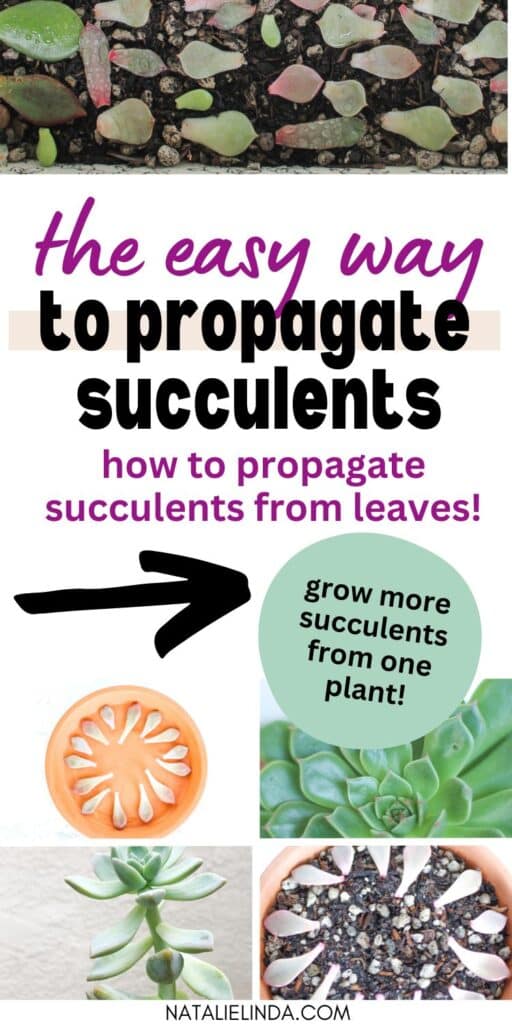
FOR MORE ON GROWING SUCCULENTS, CHECK OUT THE POSTS BELOW!
How to Care for Succulents
How to Water Succulents
What’s Wrong with My Succulent?
How to Get Rid of Mealybugs on Succulents
How to Fertilize Succulents
How to Care for String of Bananas Plant
Do Succulents Die After Flowering?
DIY Succulent Soil Recipe
Why are My Succulent Leaves Shriveling?
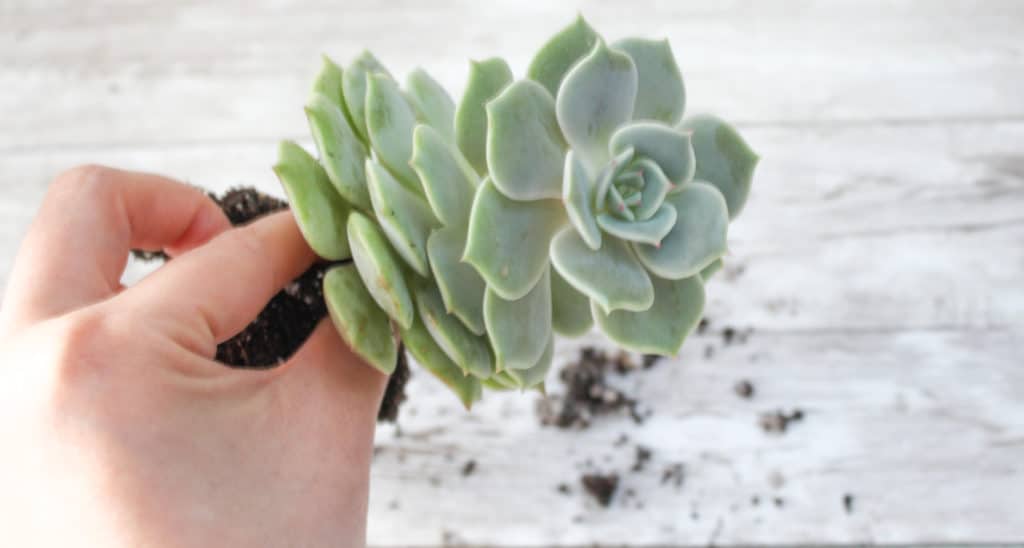
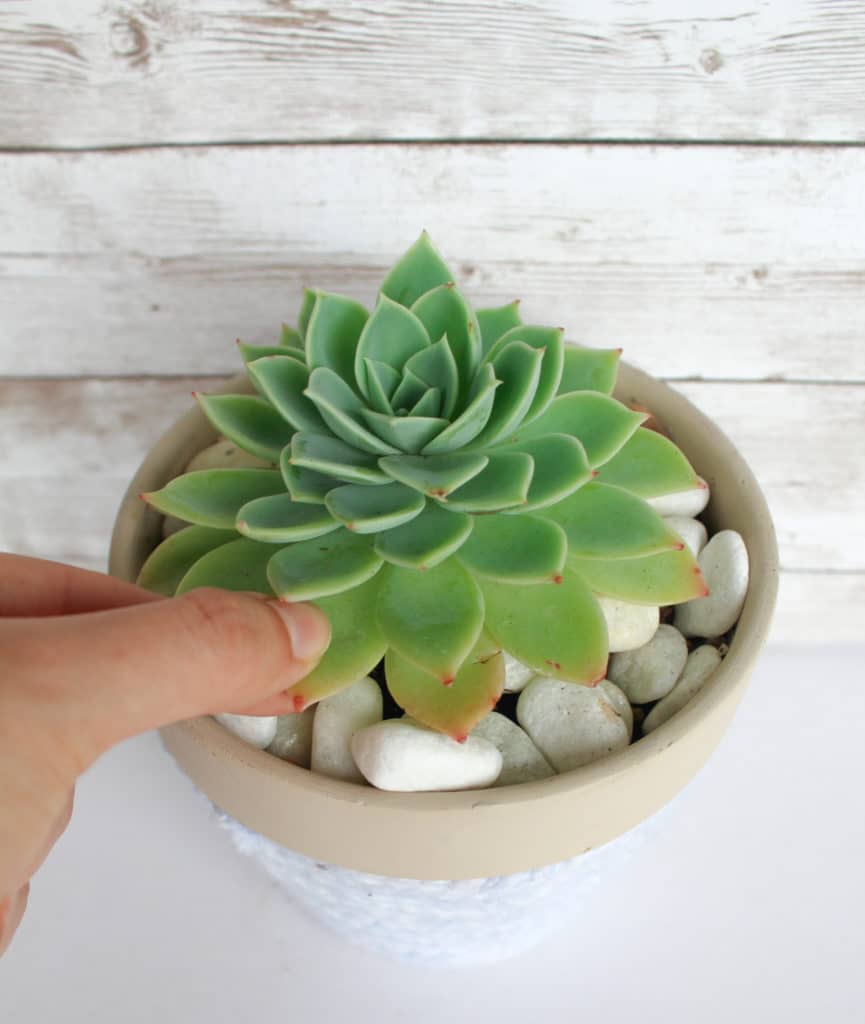
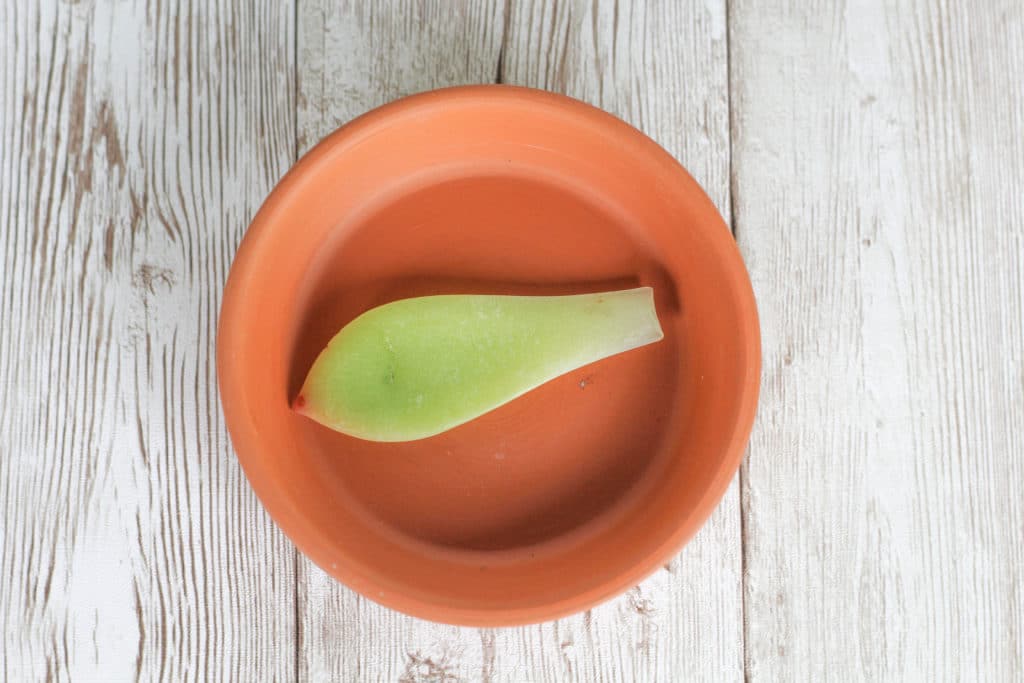
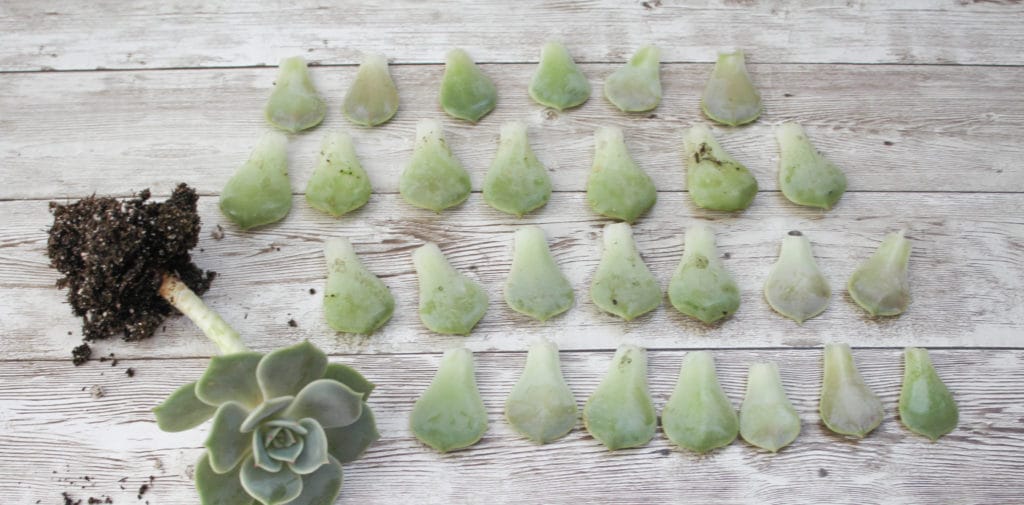
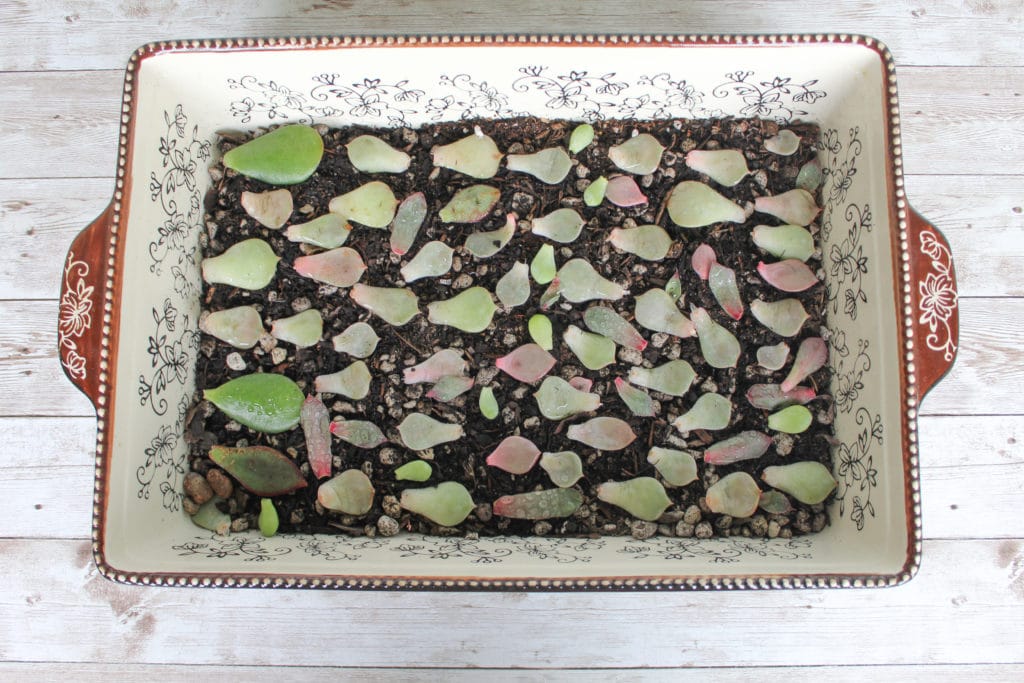
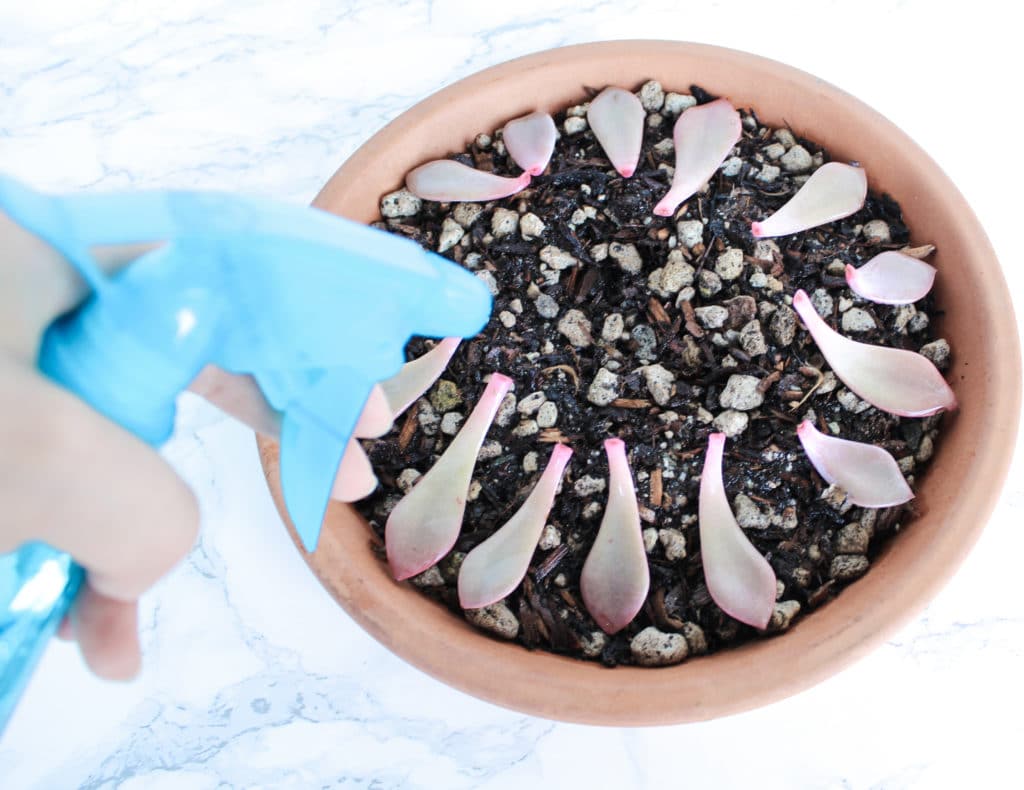
One Comment
Comments are closed.